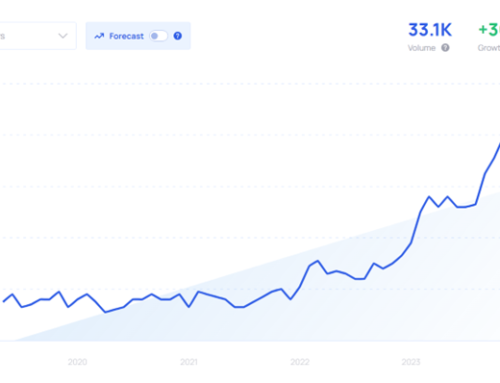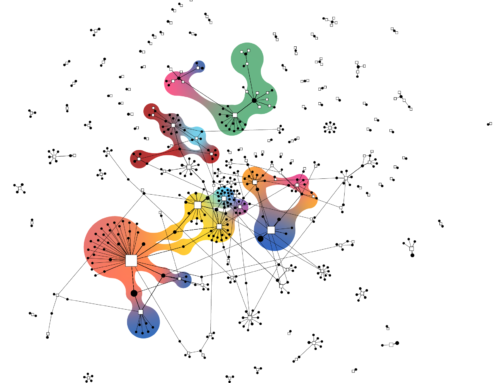The development of Artificial Intelligence (AI) has brought about significant transformations in the field of marketing forecasting, leading to enhanced accuracy and effectiveness. This commentary provides an overview of the various applications of AI in this domain, included in Table 1.
Table 1: AI uses in market forecasting
| AI Method | Advantages | Challenges | Tools |
| Predictive Analytics | More accurate forecasts, identifies hidden patterns | Requires high-quality, relevant historical data | IBM SPSS Modeler, RapidMiner, SAS Advanced Analytics |
| Real-Time Data Analysis | Allows for timely decisions, accommodates fast-changing trends | Requires high-speed processing, and data privacy can be a concern | Apache Flink, Google Cloud Dataflow, Amazon Kinesis |
| Sentiment Analysis | Helps gauge public sentiment, predicts changes in sales or brand reputation | May struggle with interpreting nuances, sarcasm, or regional phrases | Brandwatch, Clarabridge, Lexalytics |
| Customer Segmentation | Provides precise forecasts for each segment, improves targeting | Requires comprehensive customer data, segmentation criteria may not always be clear-cut | Salesforce, HubSpot, Adobe Campaign |
| Personalization | Enhances customer experience, increases customer retention and conversion rates | Can be perceived as intrusive if not handled well, requires thorough customer data | OneSpot, Dynamic Yield, Optimizely |
| Competitive Analysis | Predicts future market trends, keeps businesses proactive | Requires reliable data on competitors, may be difficult to predict competitor actions | SEMrush, Sprout Social, Crayon |
| Churn Prediction | Allows for proactive customer retention measures, saves costs | Can yield false positives/negatives, requires consistent customer behavior tracking | ChurnZero, ClientSuccess, Pega |
| Price Optimization | Maximizes profitability, improves customer satisfaction | Requires careful balancing to avoid underpricing/overpricing, requires data on numerous variables | SupraTools, PROS, Pricefx, Vendavo |
One of the critical applications of AI in marketing forecasting is predictive analytics. By utilizing machine learning algorithms, AI can analyze historical data and generate predictions for the future. This encompasses various forecasts, including customer behavior, product demand, sales trends, and market changes. AI can identify patterns and correlations that may not be readily apparent to human analysts, thereby improving the accuracy of forecasts.
Another important application of AI in marketing forecasting is real-time data analysis. AI systems can process vast amounts of data in real time, enabling marketers to make timely decisions based on current trends rather than relying solely on historical data.
AI also plays a crucial role in sentiment analysis. AI can gauge public sentiment towards a product or brand by analyzing customer reviews, social media posts, and other user-generated content. This information can be instrumental in predicting how changes in public sentiment might impact future sales or brand reputation.
Furthermore, AI can facilitate sophisticated customer segmentation based on a multitude of parameters, such as purchasing behavior, online behavior, and demographics. Predictive models can then be employed for each segment to provide more precise forecasts.
Personalization is another area where AI algorithms excel. By predicting individual customer behavior, AI enables personalized marketing campaigns. This allows companies to target their marketing efforts more effectively by forecasting each customer’s specific wants and needs.
AI can also be utilized for competitive analysis. By monitoring and analyzing competitors’ activities, companies can predict future market trends and moves.
Churn prediction is yet another valuable application of AI in marketing forecasting. AI can identify signals that indicate a customer is at risk of churning, enabling companies to take proactive measures to retain these customers.
Price optimization is also an area where AI can be of great assistance. By predicting the optimal price for a product or service based on factors such as demand, competition, and customer sentiment, AI can help maximize profitability.
Despite the numerous advantages of AI in marketing forecasting, certain challenges need to be considered. For instance, the accuracy of AI models is heavily reliant on the quality of the data they are trained on. If the data is biased or incomplete, the forecasts generated by AI may be inaccurate. Additionally, despite advancements in AI, these models sometimes struggle to comprehend complex human behavior fully. Therefore, human oversight is necessary to validate the forecasting results produced by AI.



